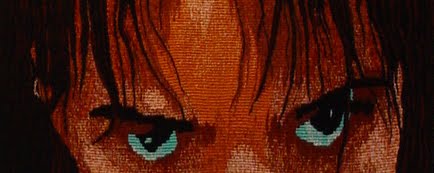 |
| Sketchbook drawing |
|
Finished weaving based on sketch above |
All sketches have the potential to be used as a basis for weaving a final design. These sketches were part of a series of work that still continues to be a point of reference for me.
The initial workbook drawings, some of which are shown here, were the result of driving through the Tokoroa/Taupo area where the forestry blocks of pines were being clear-felled for miles around. Although a sustainable crop, the visual effect of recent harvest on such a grand scale was dramatic and brutal.
This same scenery I remember as a child was a new plantation, bristling the hillside like a scalp-hugging razored hair cut.
As a teenager the trees grew to cover the steep gullies and flat plains with an even covering of young healthy looking trees.
As an adult the landscape became thickened by the undergrowth, the trees looked permanent, strong and sadly non-diverse, a mono-toned investment that looked close to harvesting a return.
The harvest of this scenery was always part of the plan, always expected, but the totality of it's sudden removal was a violent and apocalyptic scene. Mother earth had been brutalised and it was impossible for me to not record it in some way.
 |
| Sketch for Tokoroa series |
 |
| Weaving: From 4th With Love |
When people have viewed these weavings at exhibition, they have shown a mixed response. Some have been intrigued or captivated, others disturbed and uneasy. For me, neither reaction an audience shows towards the work is more desired than the other. The intent for me is for the viewer to feel a connect with the essence of the piece. Did they experience similar feelings as I felt when I saw the the results of the clear-fell harvest. They certainly wouldn't have identified the with images as forest trees, but they may have had feelings of emaciation, or recognised attributes of the feminine being ravaged or threatened in some way.
 |
| Sketch detail |
 |
| Weaving detail |
At exhibition you normally have the opportunity to read about the ideas behind the series of work you are viewing. Often the work itself is self-explanatory, or can be viewed without any explanation so that the viewer forms their own opinion of what the image is saying.
However it is always a good idea to make use of any background information the artist has to share, as it can often give you a completely different perspective on the the work. Artist statements offer insight and information that helps the viewer to better understand what it is they are viewing.
 |
| Weaving in progress on loom |
 |
| Idea taken from section of sketch book page |
 . . |
Postcards From The Mothership
Completed weaving from Tokoroa series. |




























